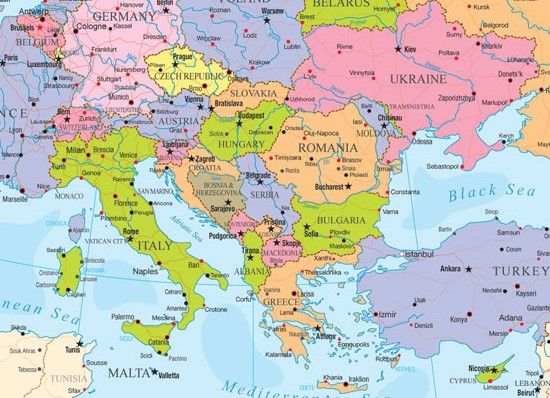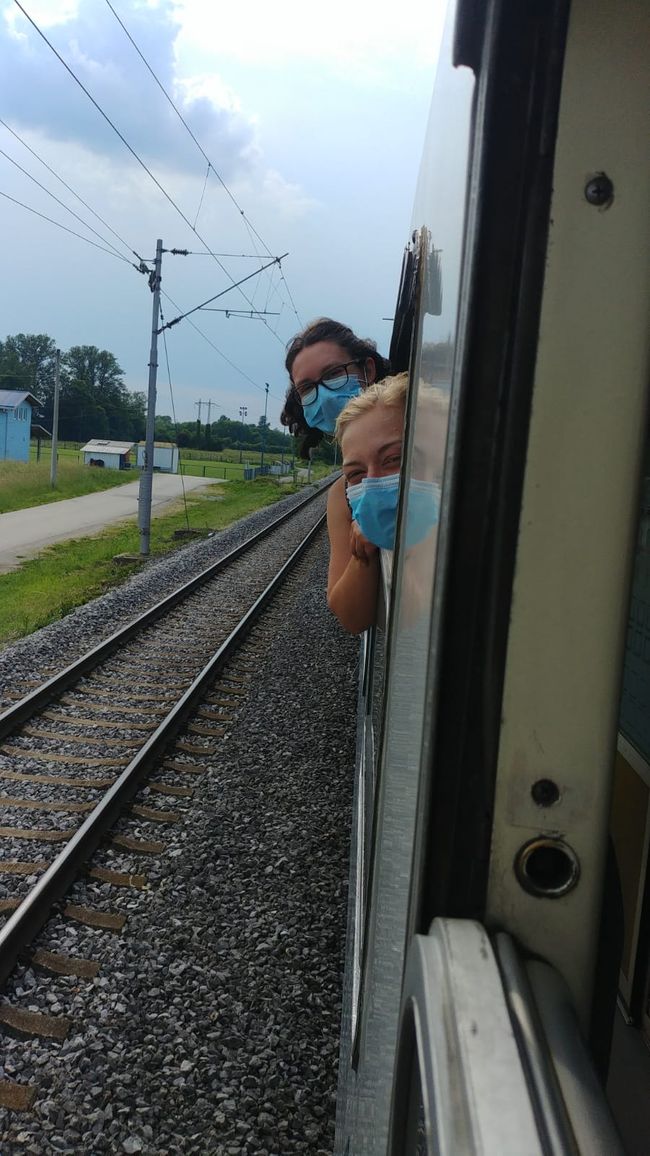Arriving in Bella Italia: Bari - Polignano a Mare - Alberobello (Stop 23)
Whakaputaina: 31.07.2021
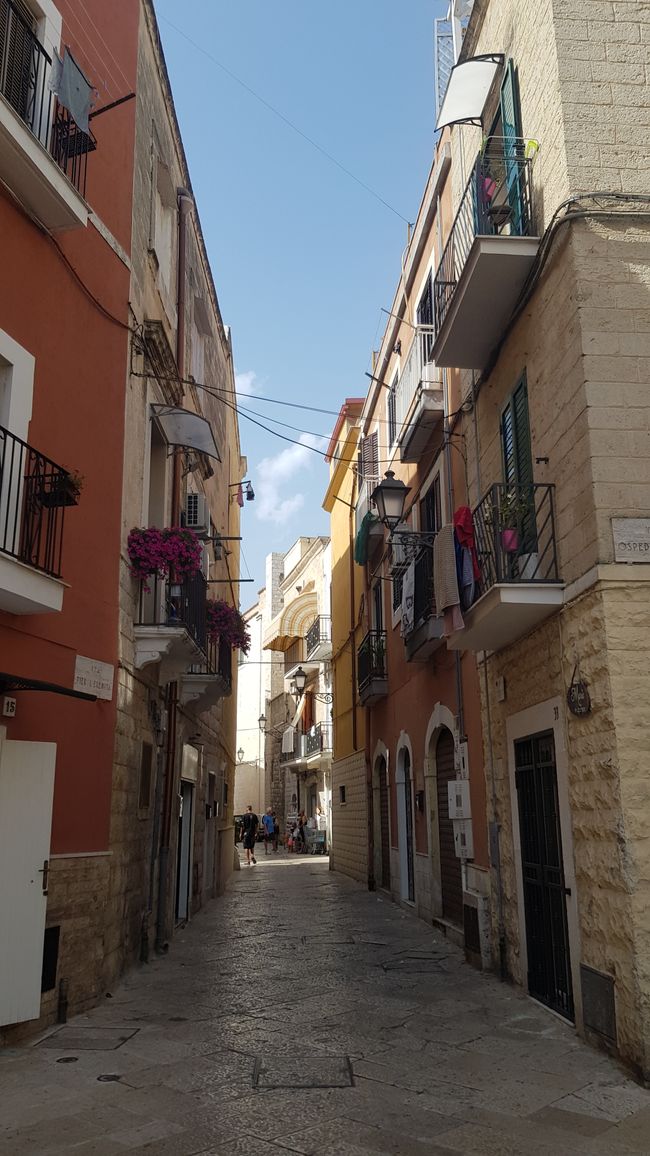
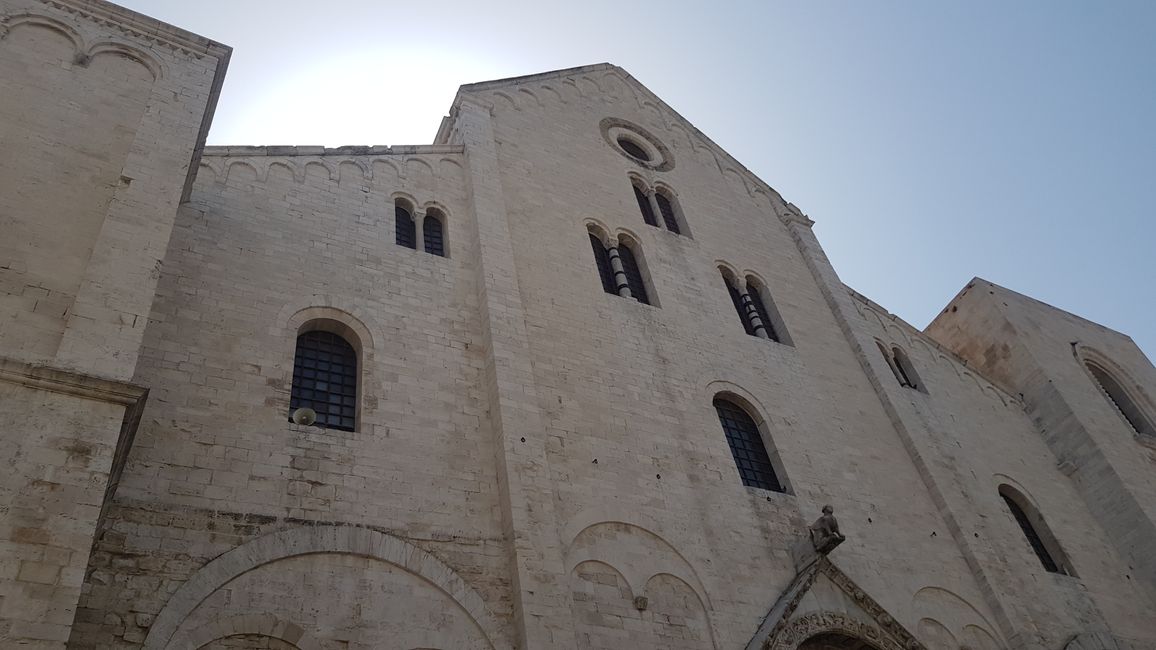
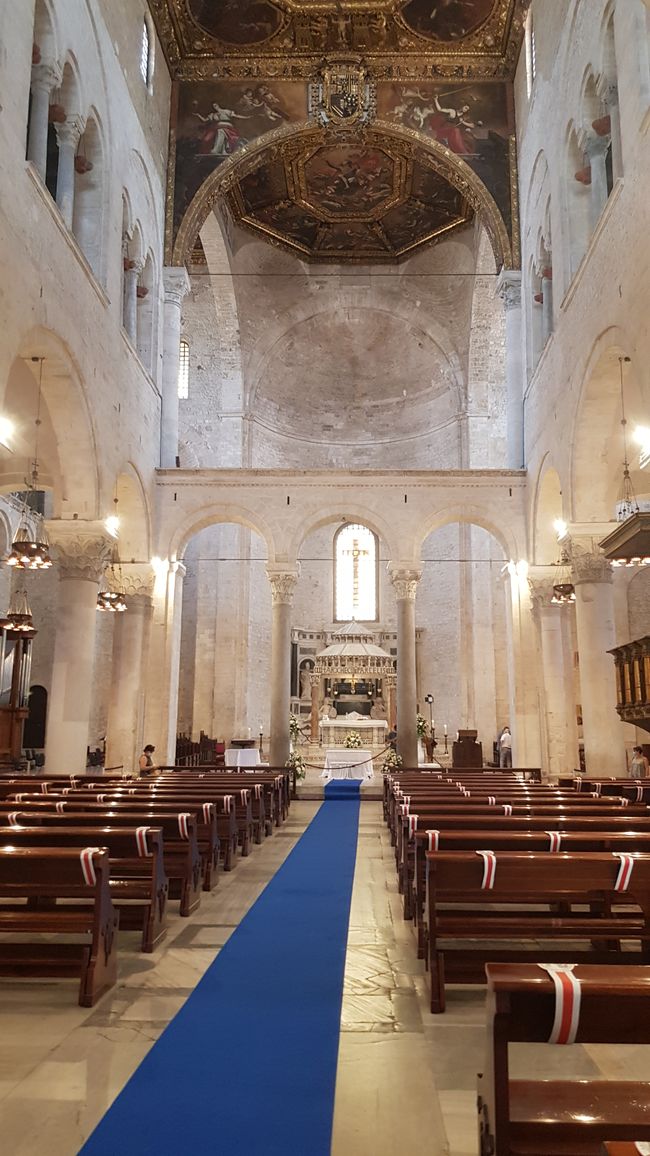
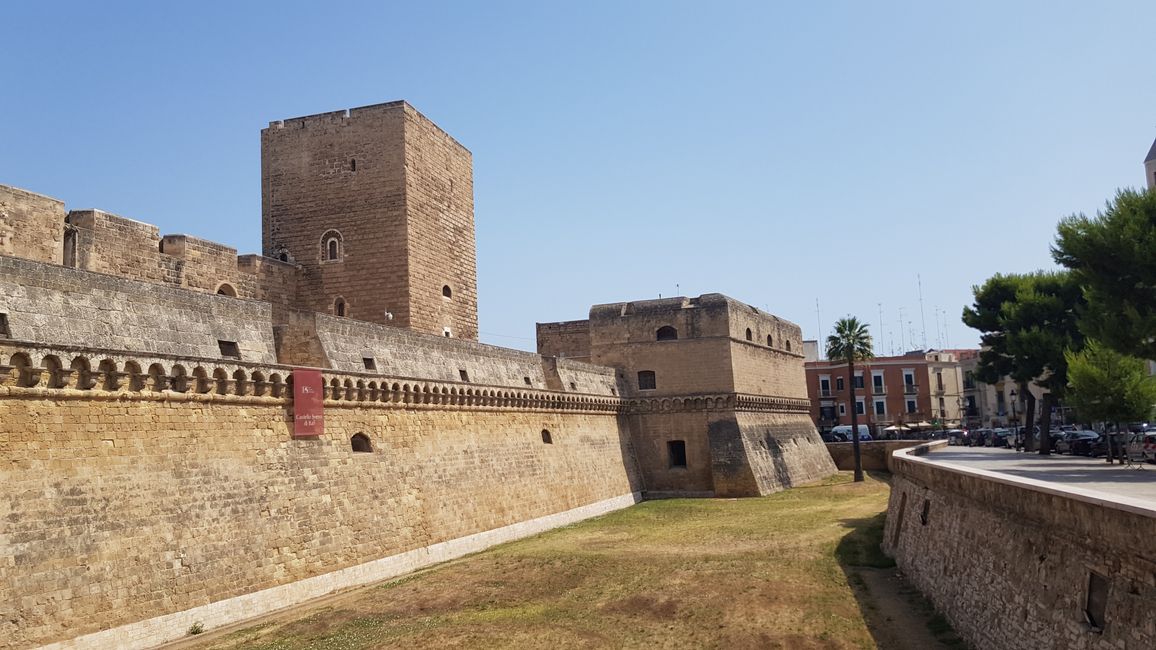
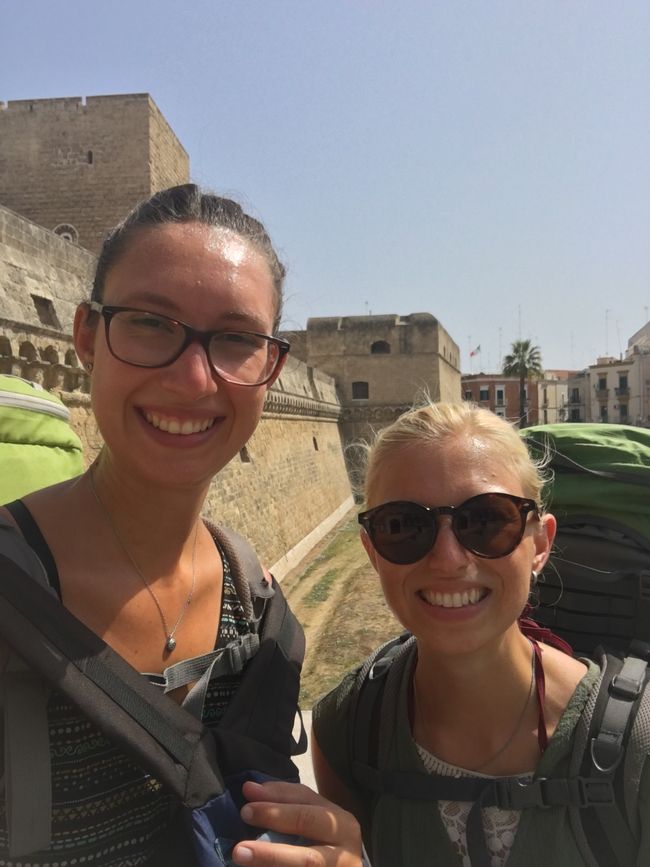
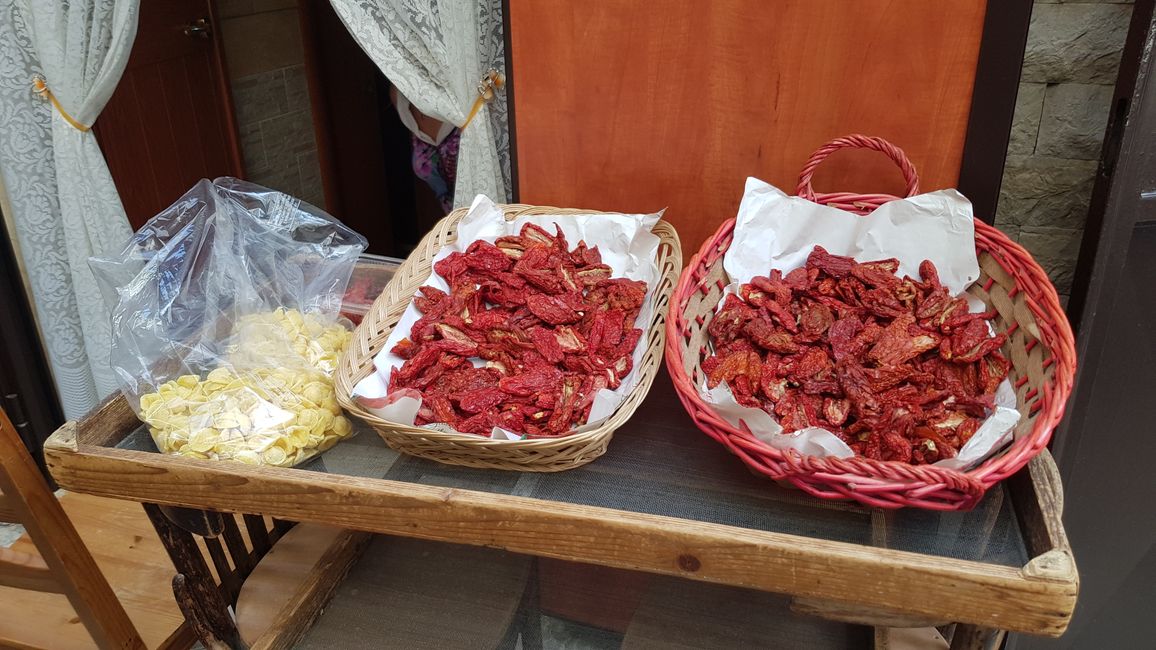
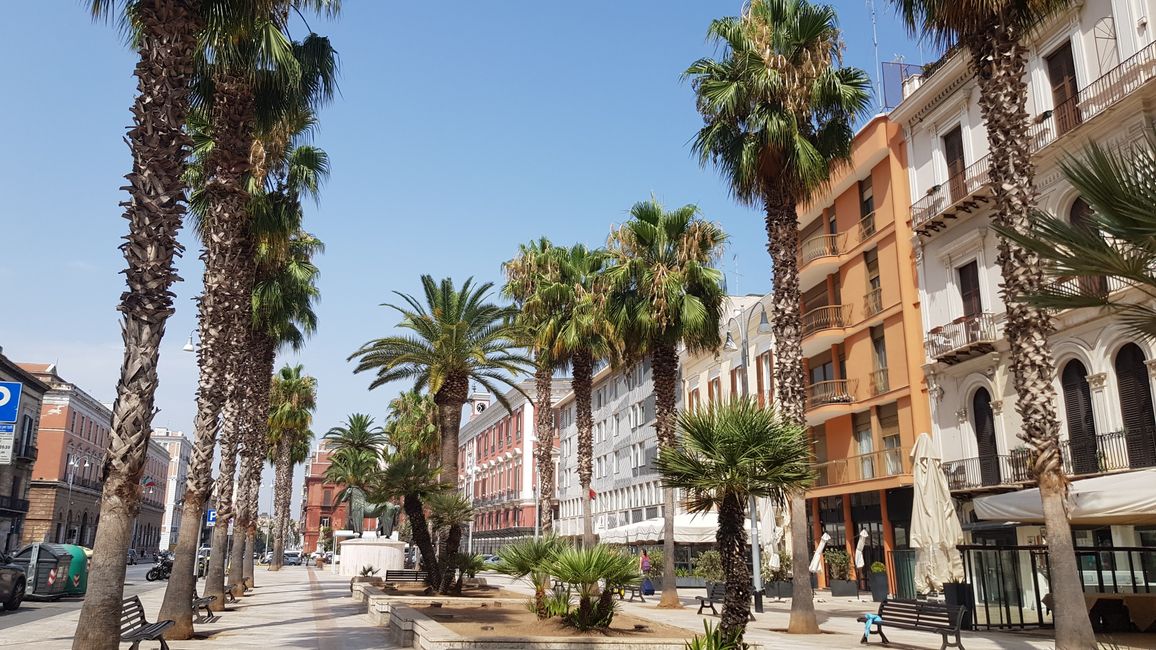
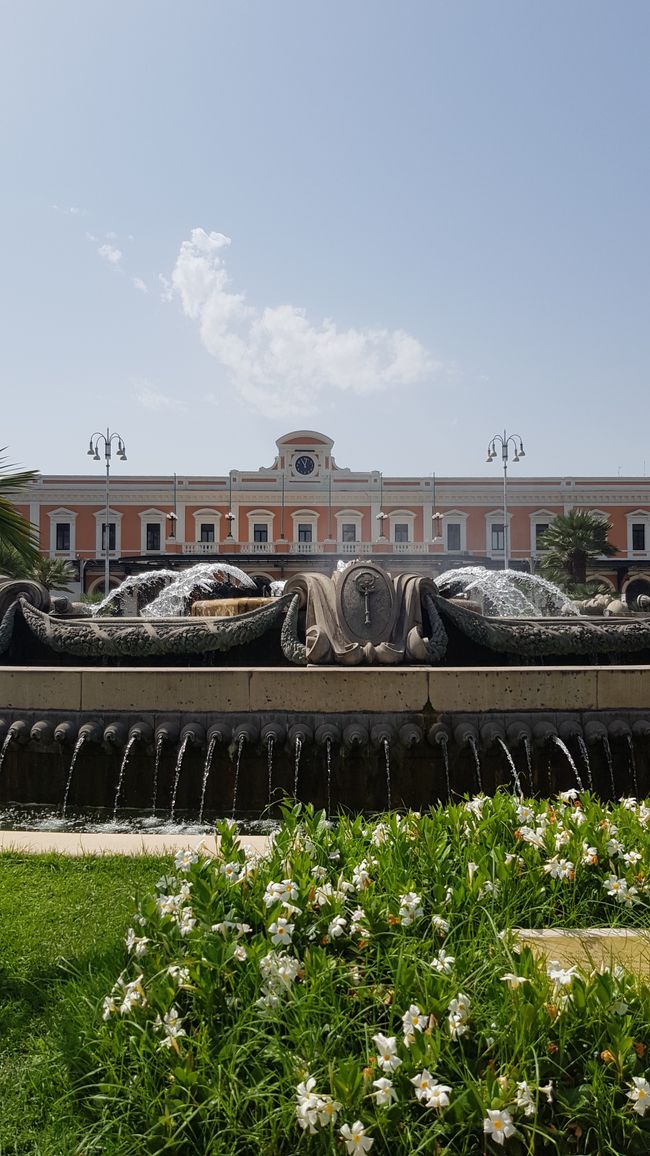
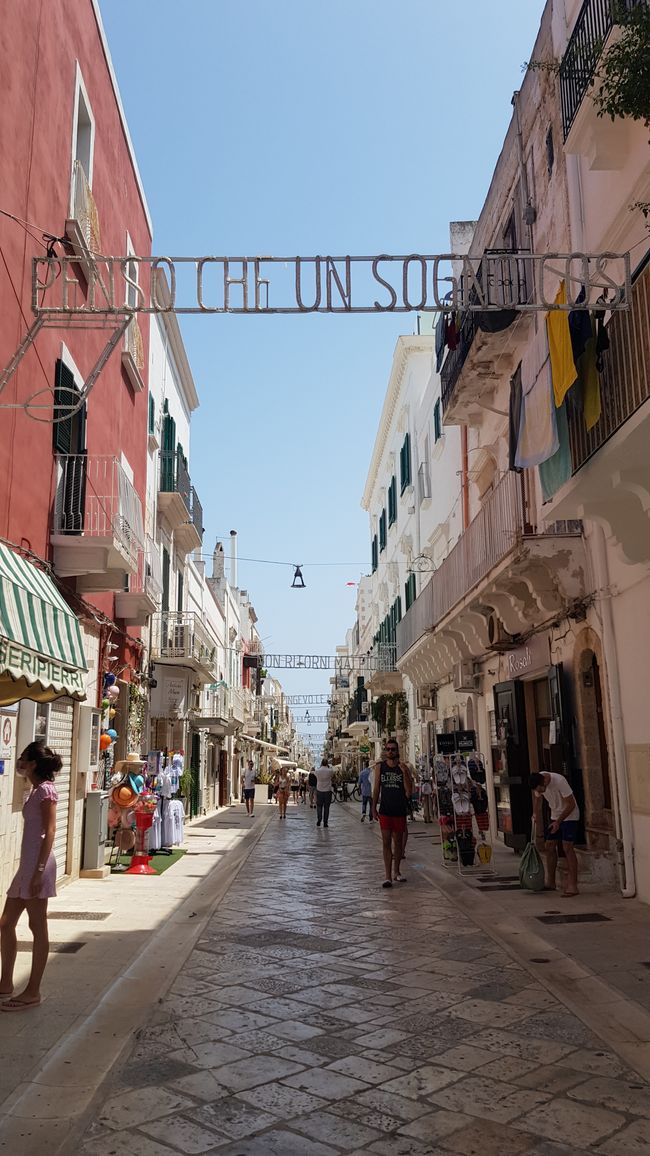
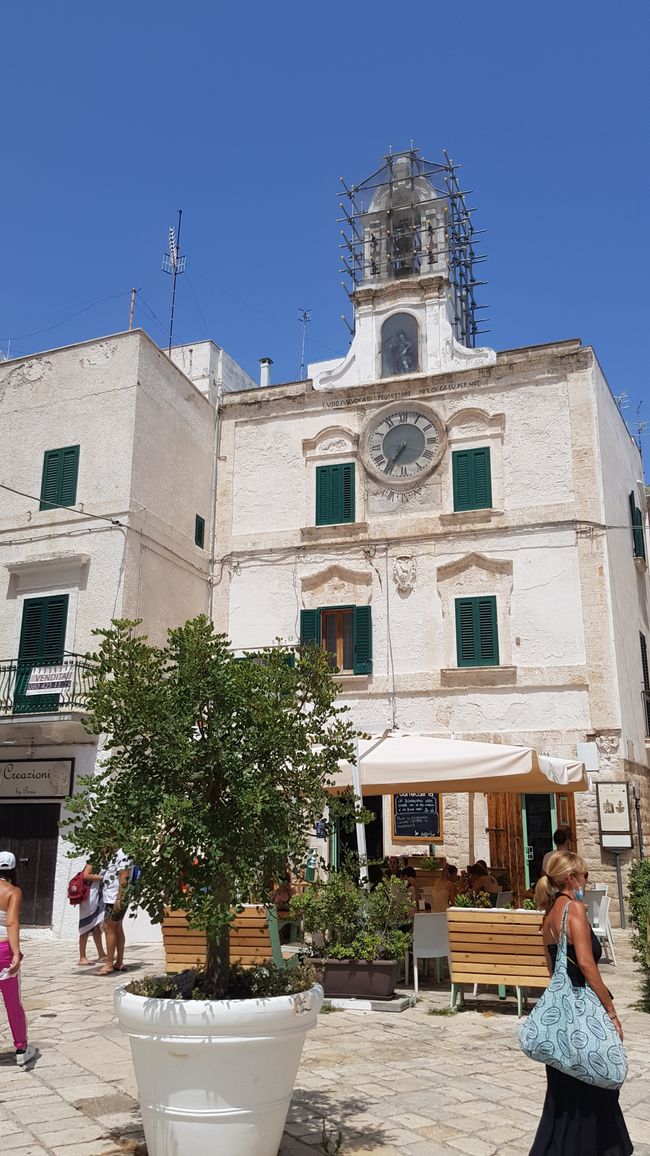
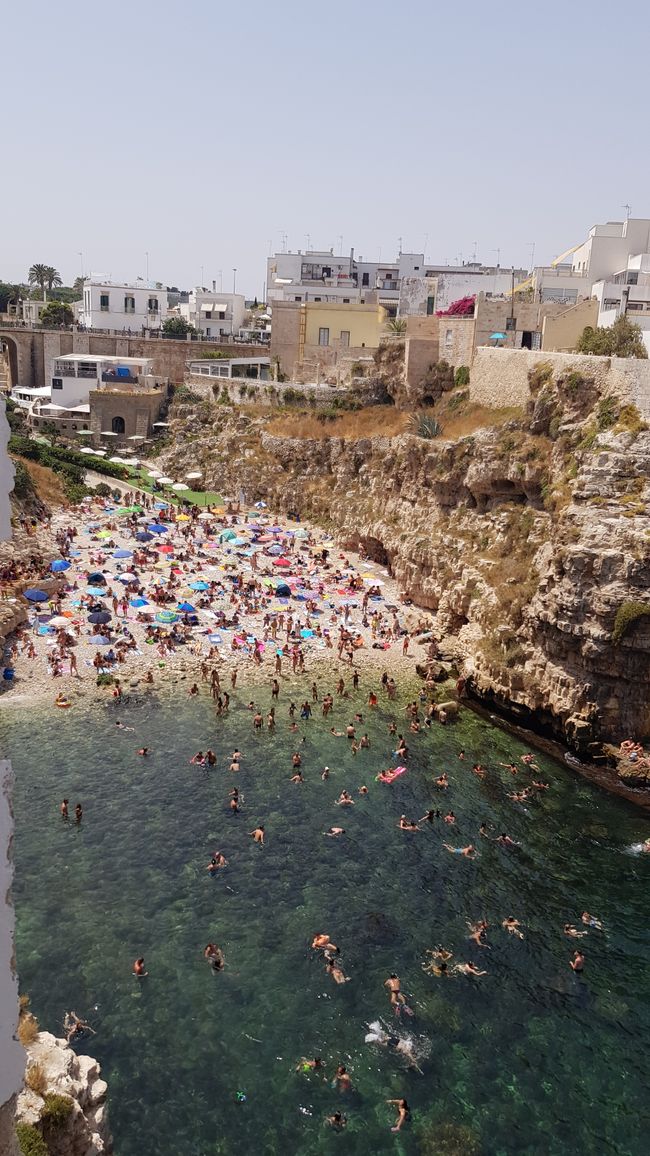
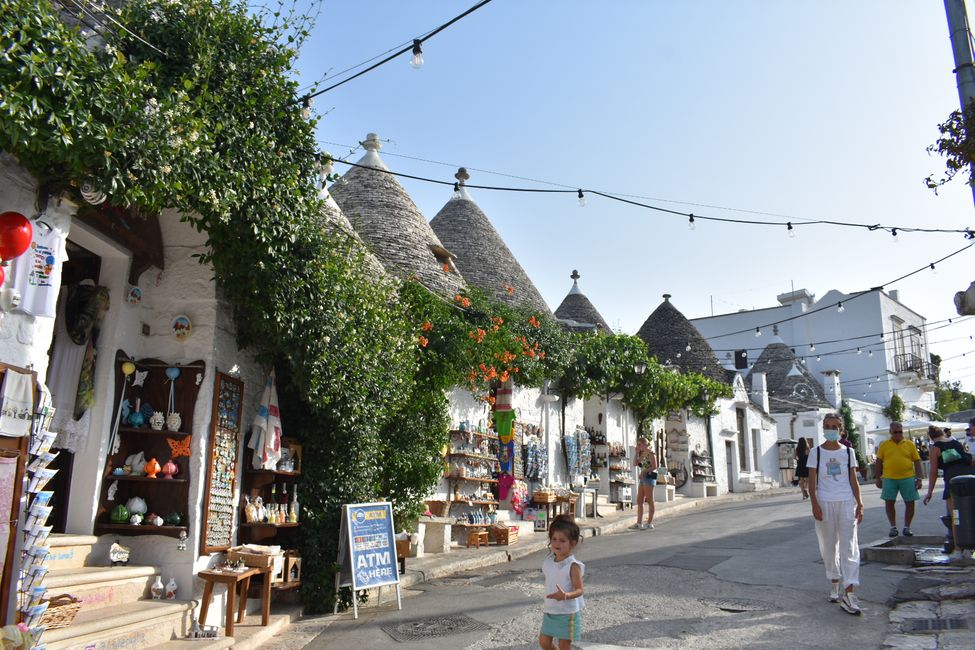
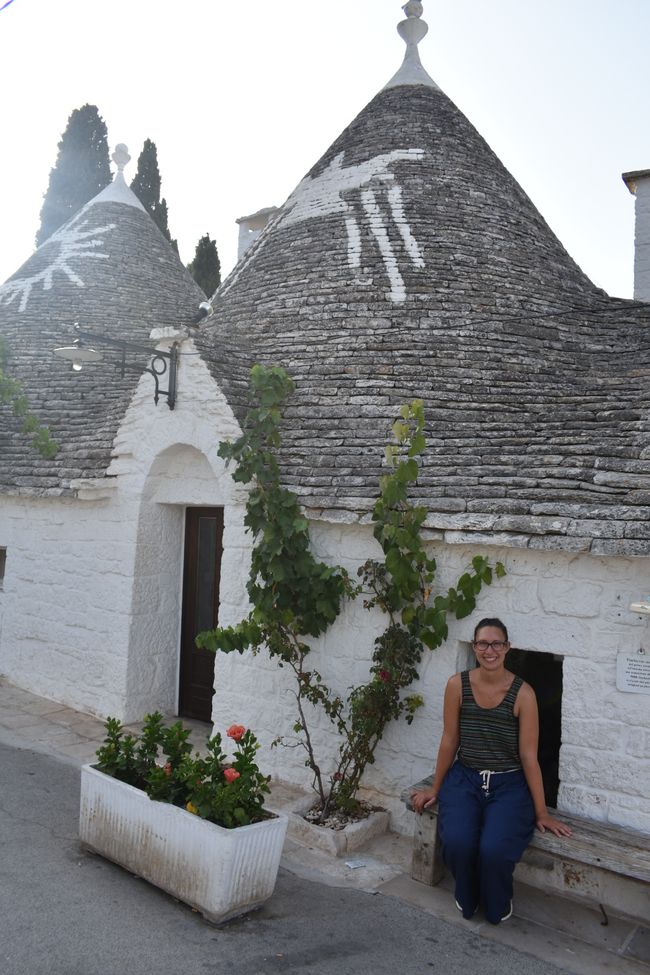
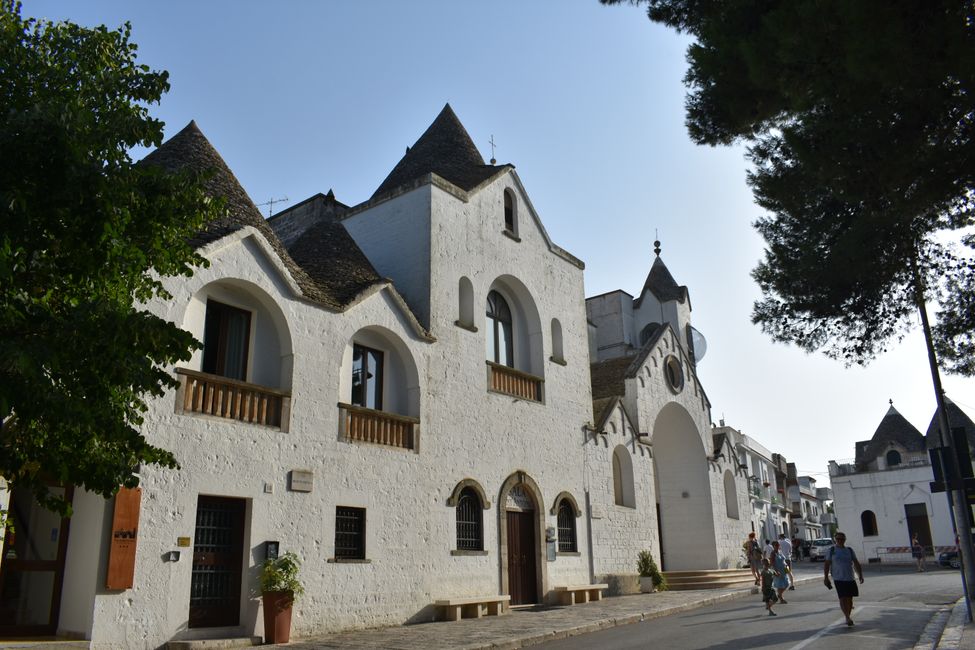
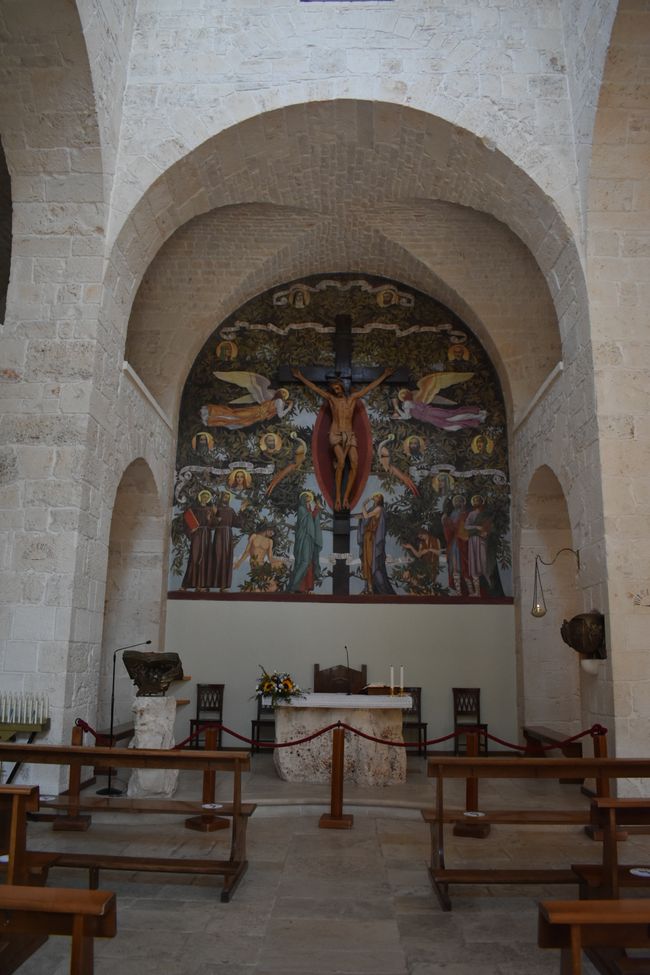
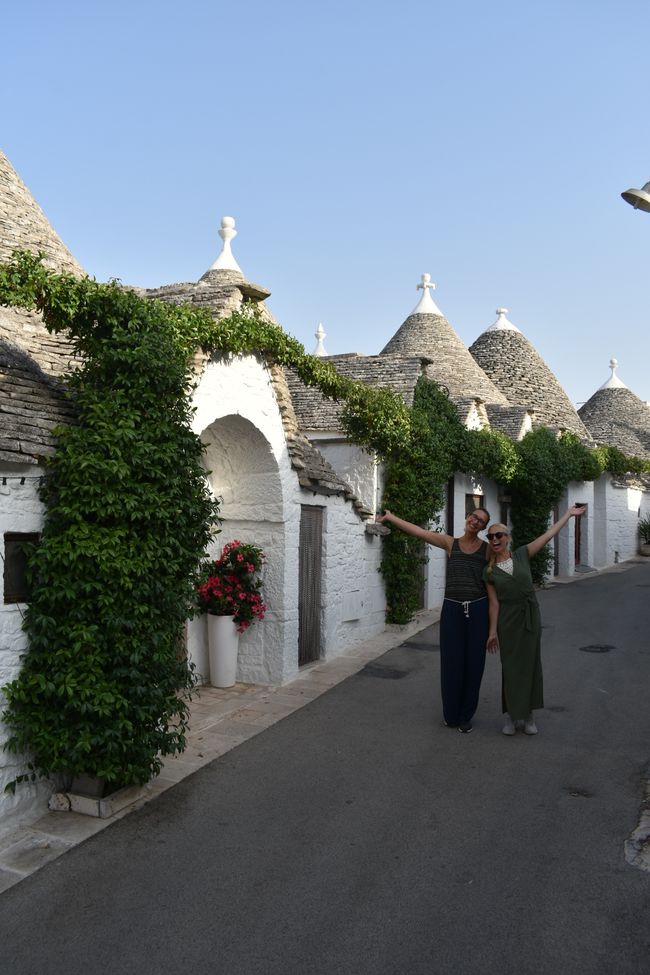
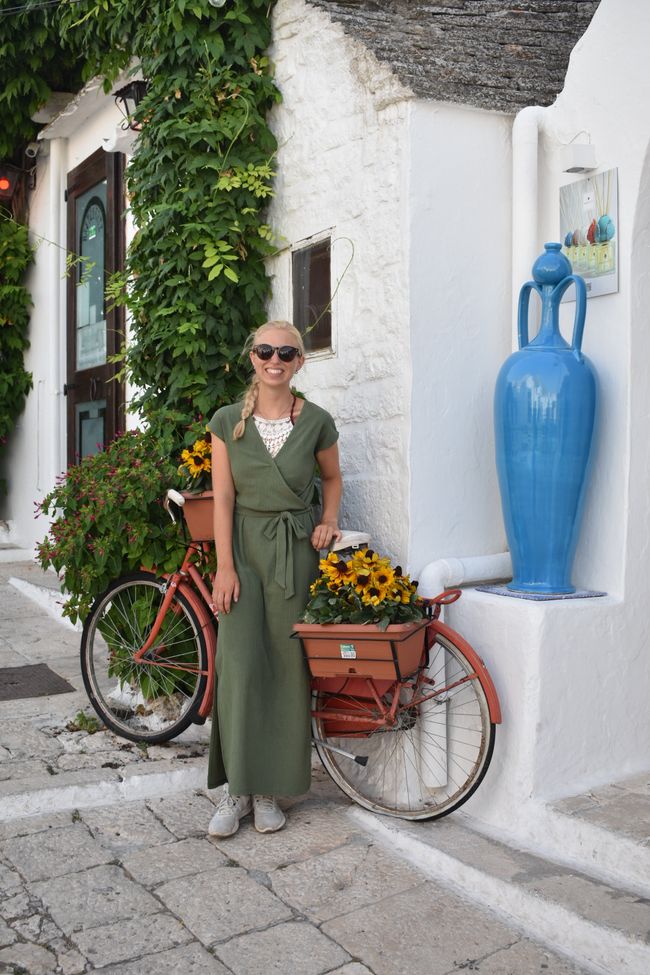
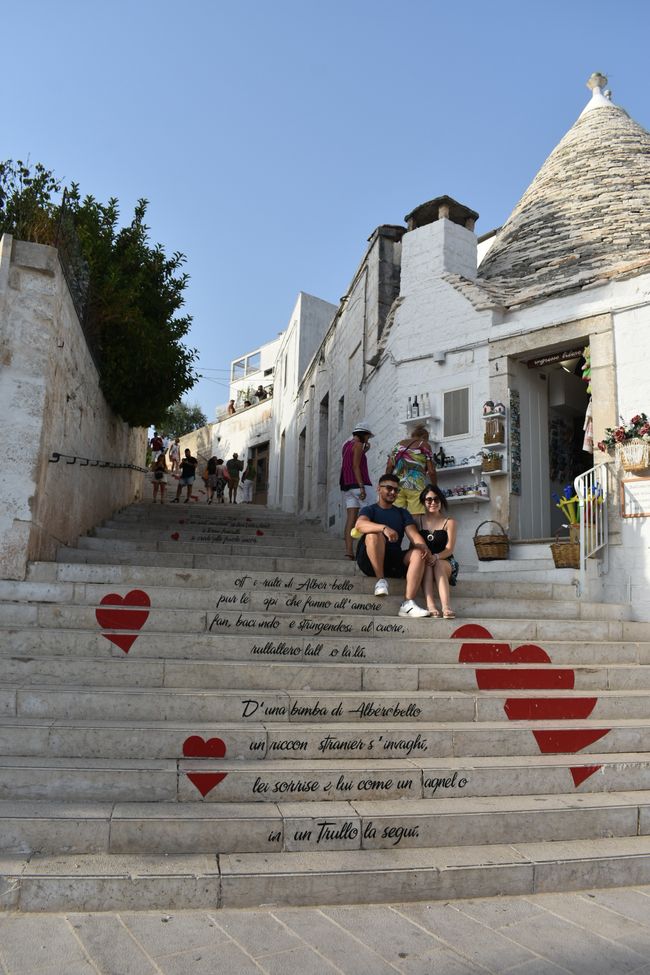
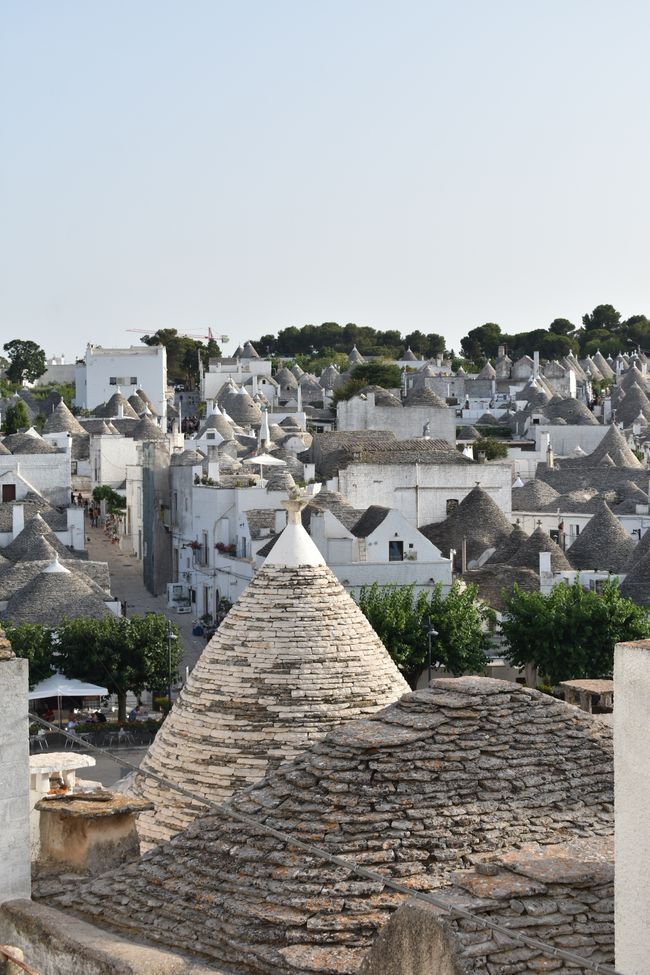
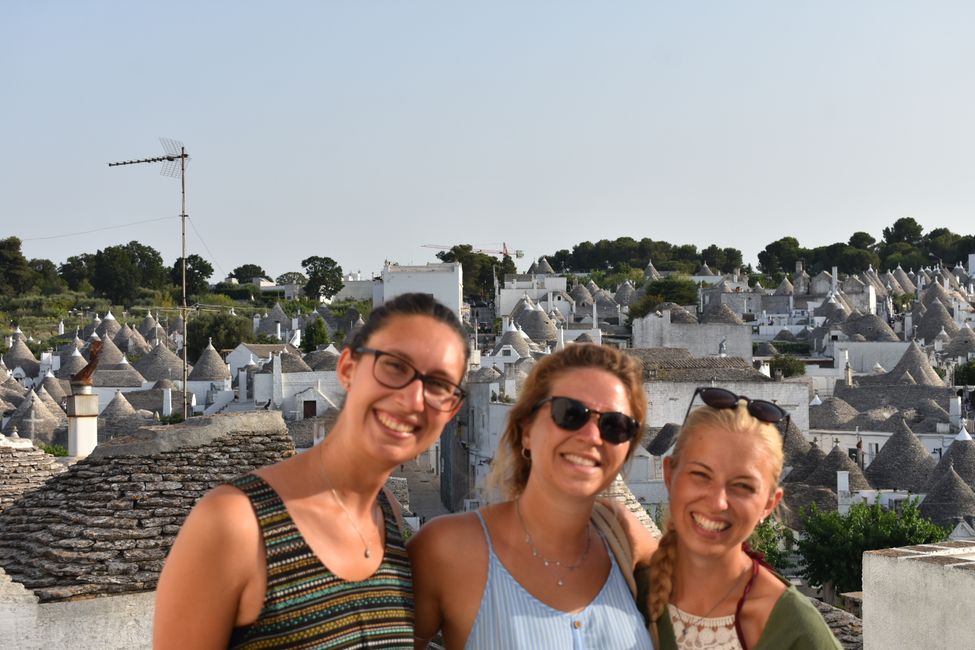
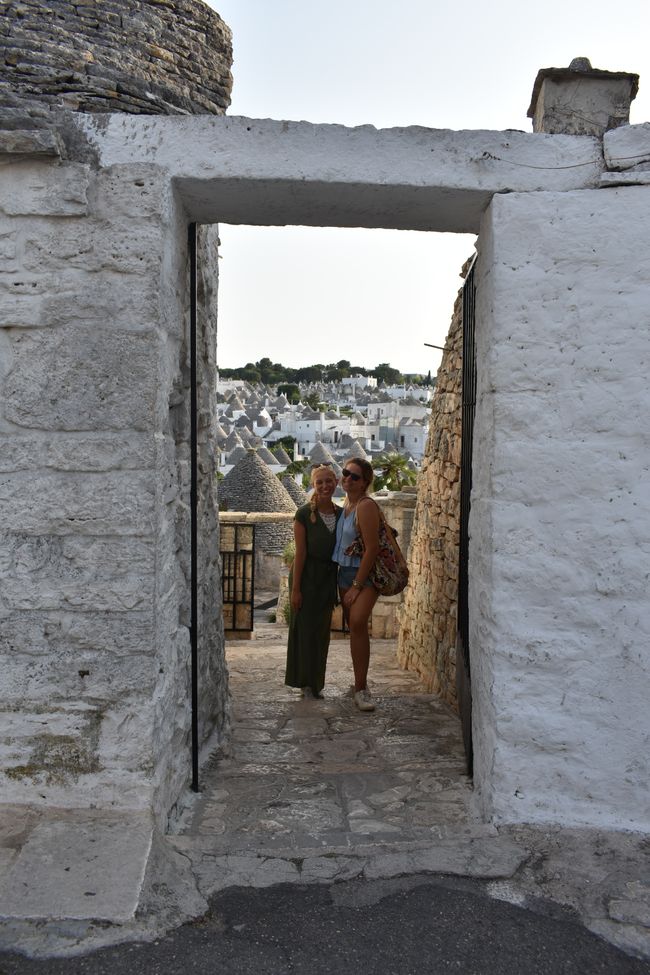
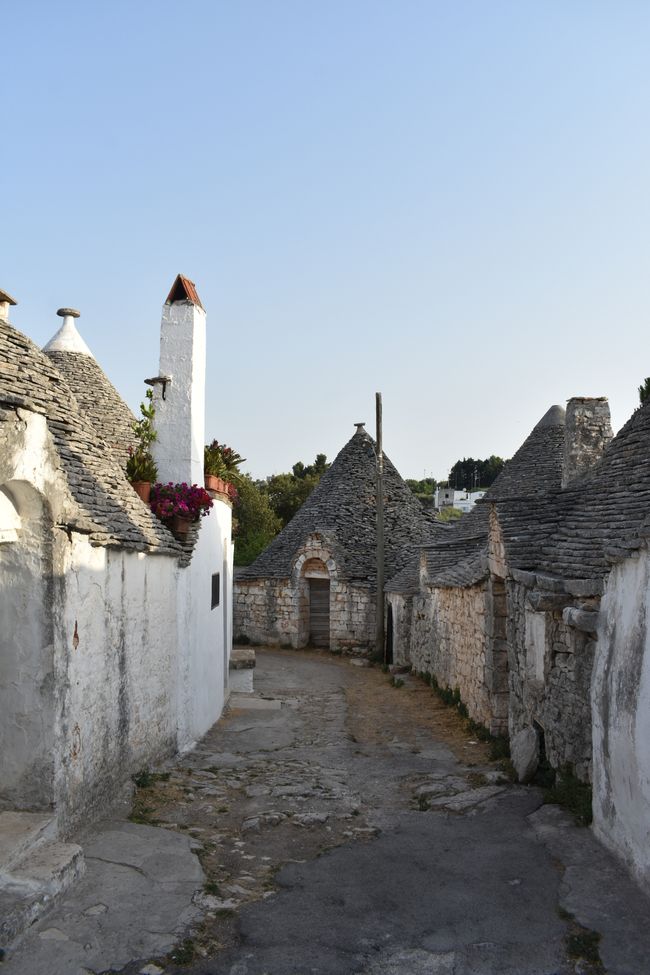
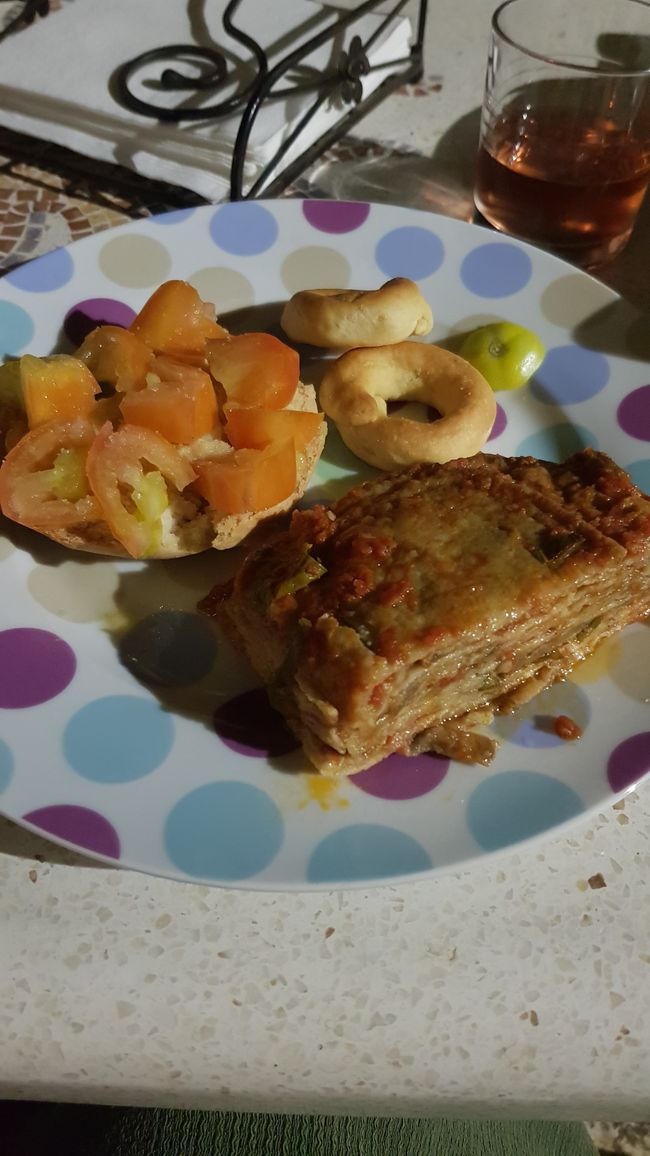
Ohauru ki te Panui
Already during the approach to Bari we can see how big this city is. With just under 330,000 inhabitants, it is the capital of the region of Apulia and an important port and university city on the Adriatic Sea. Bari was inhabited as early as the Middle Bronze Age. It has been an important port since 180 BC. When docking, our anticipation of Greek-Italian coziness is met - it takes forever for us to disembark. In return, the entry into Italy is very quick. It is around 10 o'clock in the morning and already scorching hot as we walk along the pier. Therefore, we actually want to quickly get rid of our large backpacks, but the luggage storage at the port costs 4€. That's a bit too much for us for 2 hours. Therefore, we go on an exploration tour with our backpacks.
Fortunately, the old town (Bari vecchia) is not that big. Through the beautiful narrow alleys, we first head to the large Basilica San Nicola. It was the first church of its kind in Apulia and served as a model for numerous sacred buildings in the region. With its high solid walls and minimal pomp, it appears more like a fortress to us. Inside, we are relieved by the cool air. The interior resembles the churches we know from home and is rather simple. Nevertheless, the dimensions are very impressive. We also visit the crypt, where the relics of Saint Nicholas of Myra and a small chapel are located. We actually only find the crypt by chance because we are looking for another exit from the basilica area. In the end, we go back through the same gate into the streets of the old town.
Our next destination is the Castello Normanno-Svevo di Bari. The medieval fortress probably dates from 1132 and has been destroyed and rebuilt or modified several times in history. It has been used in history, among other things, as a prison and barracks. We hope that we can leave our backpacks there while we visit the castle. We walk along the moat until we find the entrance. However, when we arrived, we were told that the castle is closed today - actually clear, it is Monday. What a shame. We refresh ourselves at a fountain and refill our water bottles. As we continue to stroll through the streets, we pass three women sitting at a table making orecchiette. Very cool, we have never seen anyone making fresh pasta on the street before. You can also buy dried orecchiette and sun-dried tomatoes at many street stalls. After a short time, we reach the modern part of the city outside the old town. In the pedestrian zone, we pass numerous different brand stores, from H&M to Prada, everything is there. We directly head to the main train station Bari Centrale.
We inquire about connections to Polignano a Mare because we have a meeting there with Yasmin. Yasmin is a friend of Babsi from her ERASMUS semester in Stockholm and lives in Tricase. The train ticket costs only 2.60€ for the approx. 40 minutes journey. After a long time, we can buy the tickets from a machine again. At first, we stop at many train stations that belong to Bari. That makes us realize how big the city is once again.
Most of the people who are on the train with us also get off in Polignano a Mare. Therefore, we can simply follow the crowd to get to the historical center. We go through the city gate and find ourselves in beautiful, lively alleys. The houses are all painted in light pastel colors. We come to the main street of the pedestrian zone. The street is decorated with fairy lights that depict the text of a poem. While strolling, we read line by line and translate, but it is not until later that we realize that we actually know the lyrics: Vooooooolare! Oops, we weren't very confident with the verse. We later find out that the singer of the song, Domenico Modugno, comes from Polignano a Mare. In search of Focaccia Barese, we search almost every small alley of the beautiful old town. Polignano a Mare today has about 18,000 inhabitants. It was settled in ancient times and the harbor was also significant in antiquity. Very beautiful house facades are lined up, with many bars, restaurants, and shops inside. On the edge of the old town, you can repeatedly reach balconies from which you tower above the Adriatic Sea. The steep cliffs impressively descend into the bays where people are swimming in some places and sailboats in others. The deep, clear water really invites you to swim again!
We still have our large backpacks on our backs and are slowly becoming a bit skeptical whether we will still find Focaccia Barese. In the end, we find it outside the city walls. The long wait is also worth it. The Focaccia is made with tomatoes, herbs, and olive oil - and damn delicious!! Then we have to wait. Yasmin is still visiting her Spanish friends and has already announced a 1-hour delay. After a while, we wander into the bar next door and have some Lemon Soda. Unfortunately, a Fanta lands on Babsi's dress. Still refreshing. The heat is again quite unbearable, we are hardly able to think. Babsi's phone also no longer cooperates, so the contact with Yasmin is temporarily interrupted. The girls arrive in Polignano a Mare with only a 1:45-hour delay. Finally!
After a big, joyful reunion and a short round of introductions, we start looking for food again - this time with 7 people. They also can't find Focaccia, so they decide on different Pucce (sandwiches), and we go for Limo again. We also have a great conversation. The girls are in different professions, which makes the exchange very interesting. One is also a special education teacher and works in Madrid. The conversations are definitely a lot of fun, and the wait is quickly forgotten. After that, we take another short walk. Yasmin points out the statue of Domenico Modugno to us, as well as a very expensive restaurant in a cave, where some weddings also take place. But then we have to go to the train station because the Spanish girls want to catch their train to the airport. However, they are not very experienced with train stations, and it gets quite tight. They also forgot their entry forms (Corona) in the car. Well, have a safe journey!
We also get in the car and head to our next destination: Alberobello. Yasmin chose the place because she remembered one of our first conversations: after she told Babsi during Erasmus that she comes from Apulia, Babsi's first reaction was 'WHERE THE TRULLI ARE?!?!' XD. Yes, a dream came true. Yasmin tells us a lot about the Trulli already on the drive. Most of them are located in Alberobello. They are spherical stone buildings that were built in the 17th century to avoid paying taxes to the royal government. The material used was plentiful, and cement and mortar were not used so that the houses could quickly disappear during a royal inspection. There are similar stone buildings in other shapes in the rest of the region, but they were often used as shops there, while in and around Alberobello, they were residential houses. Because of this history, the residents later felt very ashamed of the Trulli. No one wanted to live in them anymore because they were associated with poor people. They were partially destroyed or at least left abandoned and decayed for years. In 1996, the Trulli in Alberobello were declared a UNESCO World Heritage Site, which turned the tide for them. They not only became a tourist magnet - people started taking care of them again, giving them new paint, renovating them...and using them as a new source of income, either as accommodations for travelers or as sales space. A few people also live in them again. It's hard to imagine that they were all ruins once. We can't get enough of these cute little houses. Besides the Twin Trullo and the Trullo Church, every alley is a sight to see. We come to a staircase through the marketplace, which is decorated with poems. It leads to a viewpoint from which you can admire the Trulli roofs from the outside.
We notice our increasing tiredness due to the short night and the many beautiful impressions. Although we actually don't want to leave here anymore, we get back in Yasmin's small Fiat Panda and head to Tricase Porto.
We don't need quite 2 hours, reminisce about Stockholm, Copenhagen, and discuss politics on the way. Yasmin also wants to play us a CD that she bought especially for all her visitors: traditional folk music from the Salento region where we are right now. It is marked by various cultural influences from the former occupiers in the area (including Greek dialects, Spanish instruments). In one type of folk song, it's about the spider Tarantula, which is associated with many myths. Only one comes to our mind: girls who did not want to marry the man chosen for them pretended to have been stung by a tarantula. They became so crazy from it that they hopped and danced faster and faster and sang faster, higher, and louder. You can vividly imagine that with the songs. So the journey goes by quickly.
We are all happy when we arrive at Casa Yasmin in Tricase Porto. Luckily, food is already taken care of: we get a piece of Parmigiana di Melanzane (eggplant lasagna mhmm) from Yasmin's grandmother, Frise con Pomodorini (soaked dry bread with tomatoes and olive oil - yes, we were skeptical too, but delicious!), Taralli (snacks), and an incredibly good Tiramisù from Yasmin's aunt (to lift you up!). We also have a delicious rosato wine from Puglia. We are being spoiled. We sit on the terrace together for a long time and chat until we get tired and fall into bed. What a beautiful first day in Italy! Amazing! This is what happiness feels like.
Ohauru ki te Panui
Whakautu
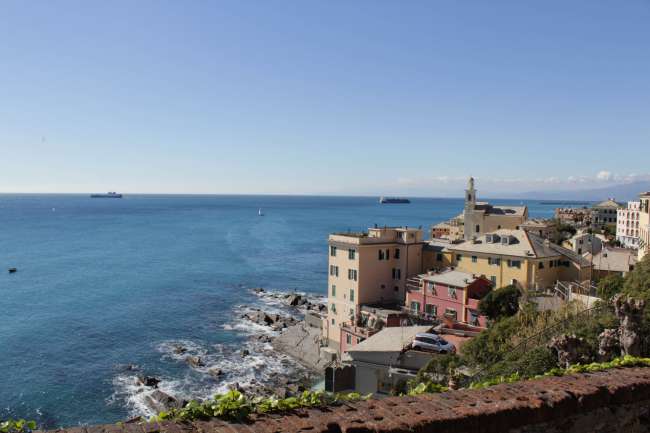
Ripoata haerenga Itari
